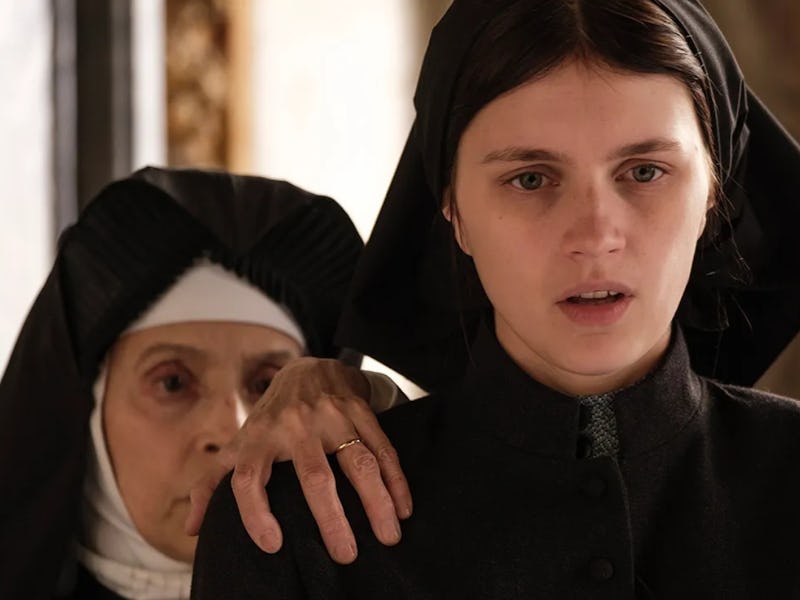A Surprisingly Smart Horror Prequel Just Hit Hulu
Go your own way.

With the prevailing rationale being that the horror genre gets way less scary the more you attempt to explain it, the work of a horror movie prequel is mostly devoted to justifying its own existence. The First Omen, which just hit Hulu, is not an outlier to this — it’s here to show you how we managed to get to the events of the classic 1976 film, The Omen. What makes it different is how effectively it turns what could be a rote set-up and unnecessary exposition into fantastic thriller material.
The Omen, directed by the late Richard Donner, doesn’t seem to need much explaining. In fact, the whole film is devoted to solving the mystery of how the child of an American diplomat was replaced, and how that new child (Damien, soon to become a horror movie icon), turned out to be the Antichrist. This all makes The First Omen seem even more unnecessary on paper. In telling why a new Antichrist would need to be conceived and what set the wheels in motion for the rebirth of such an evil entity, it’s essentially a set-up to a set-up.
Luckily, director and co-writer Arkasha Stevenson understands where to pay homage to the original film and where to push into new directions. Many of the film’s horror peers often falter in this balance; something like The Texas Chainsaw Massacre: The Beginning is very effective when it’s not providing belabored answers to questions no one was asking, like “How exactly would Leatherface get his masks?” or “Why does he use a chainsaw?” Stevenson rarely dwells on such issues, instead focusing on a story that could feel fully formed even without a connection to one of horror’s most hallowed classics.
Stevenson turns The First Omen into a kind of paranoid ‘70s conspiracy film, one where a novice nun, Margaret Daino, uncovers the seedy (and possibly supernatural) underbelly of her Roman church and its orphanage. Margaret (played with a mix of innocence and jittery neurosis by Nell Tiger Free) is a fantastic choice to place at the center. In prequels devoted to developing some kind of monster, the “straight characters” are often little more than vehicles for eventual gruesomeness. But Margaret, who’s suspicious from the start and wrestles with her faith throughout, is a likable, complicated protagonist.
It also changes the lens of the original Omen, which carried its deepening terror from Gregory Peck’s point of view. After films like The Yearling and Cape Fear, Peck was one of America’s Dads, and much of The Omen’s effectiveness comes from undermining his patriarchal notion of control. By lending us Margaret’s perspective, who clashes between the church’s sexual conservatism, her age group’s more freewheeling attitudes, and her own hallucinations, we get an inherently different story about a woman who struggles to find control of her life in the first place.
Like so many Americans before her, Margaret finds Rome doesn’t live up to the hype.
The First Omen therefore finds more kinship with films like Rosemary’s Baby, another titan of the genre that dealt with young women and the lurid forces that loom around them. This mood is enhanced by Stevenson’s unwavering eye for framing horrific scenes, and she manages to deliver graphic nightmare fuel and claustrophobic panic with aplomb. Unfortunately, no one can stop the basic nature of the prequel; if you’ve seen The Omen, you know where The First Omen will end up, no matter how many times the film throws you a tonal curveball.
Still, The First Omen is a delightfully creepy watch, even if you haven’t seen The Omen or aren’t a particularly rabid devotee of it. Though its story has a sense of inevitability, it doesn’t owe fealty to the 1976 film. Instead, it uses one of horror’s most famous stories (and twists) to tell a new tale with singular personal stakes. In that way, it can be enjoyed as both a companion chapter and a narrative all its own. And when you can accomplish both in the well-worn territory of the horror prequel, you’ve more than justified your existence.